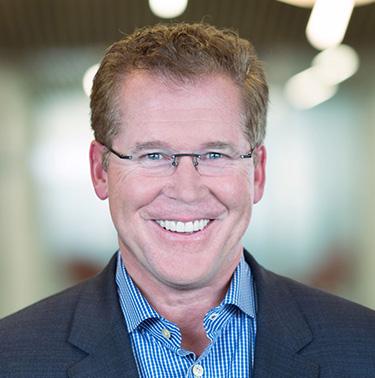19Apr2022
The world is in turmoil, and so is the role of a CEO. What used to be about “running the company” has evolved into “protecting your license to operate” as the modern leaders, time and again, find themselves dealing with unexpected setbacks and making vital decisions on a shorter notice than ever.
As everybody else is watching the global economy move from one catastrophe to another and companies trying to navigate the storm in continuous attempts to avoid becoming completely shipwrecked, one can’t help but wonder, what are the most pressing issues for those CEOs at the moment?
Stephen Miles, Founder and CEO of The Miles Group/TMG, which advises top CEOs and boards globally, shared his thoughts on the subject with Nordic Business Report. While he agrees that leaders are facing a multiplicity of small to large scale crisis and catastrophic events every day, he sees one particular threat that might rise above everything else.

Photo of Stephen Miles. ^
Struggling to lead in hyperinflation
“We are heading into a hyperinflationary world, and there are very few people in any company who have ever dealt with inflation of this magnitude before,” Stephen Miles says. “As literally everything becomes a lot more expensive, companies must approach the issue of pricing in a lot more strategic way than what they are typically accustomed to.”
Miles points out that especially in uncertain times, pricing should be a strategic task in companies – a C-level responsibility instead of something that operative functions such as sales and marketing should handle. Working on operational excellence and simply taking some cost out is not going to cut it: as breaking out of the inflationary cycle is very hard, pricing must be a repetitious process.
In addition, regular reviews should be carried out at least on a monthly basis to recognize the most serious inflation risks and make sufficient plans for the future.
“Most companies are way behind the curve on operational excellence and taking pricing actions as it relates to hyperinflation,” Stephen Miles points out. “The senior-most leaders in the world now need to be anticipating – both for themselves as well as their organizations – the sort of leadership requirements needed to lead in a hyperinflation world.”
Fighting catastrophe on multiple fronts
The combination of weak signal detection and agility of action is a critical skillset for any organization. For the leaders, this means the ability to cultivate capabilities inside the company, so that they can “get a whiff of smoke before anyone else has seen the fire” – and to respond to that whiff of smoke in a flexible, fast way.
In a world full of both graphic and emotional noise, that task is becoming more challenging, and setbacks will most likely happen. That has shifted many companies to a defensive mode as they set their focus more on survival than on proactively finding new ways to thrive. According to Stephen Miles, while any crisis creates threat, there are also opportunities waiting to be capitalized upon. The competitive advantage of the future will be the ability to swiftly deal with setback after setback – flexibly and early.
“We need to redefine resilience. The real determinant will be whether companies have an organizational culture that is primed to deal with multiple setbacks, without allowing themselves to be knocked down or out.”
Tone at the top leads the culture
To make the leap from survivors to thrivers, CEOs need to bring their leadership teams into alignment by sharing context with them continually. They have already emphasized their purpose and values, but especially in a time of massive uncertainty and multiple setbacks it is important to realize that people can fall out of alignment very quickly, especially when under stress.
“If you can have weekly or biweekly 30-minute sessions with your top people, you can share information, context, and attitude, to cascade alignment throughout the organization,” Stephen Miles points out. “People really care about what the CEO is deciding, prioritizing, and sequencing week to week.”
The more evident the change in the role of a CEO becomes, the more essential it is for the CEO to find the right people for the right tasks – as well as to determine whether he or she is the right person to take the company forward.
Stephen Miles agrees that based on his extensive experience in discussing these issues with globally renowned leaders, the opinions and attitudes vary. At the end of the day, it often comes down to the new role of a CEO, and who feels comfortable to change accordingly.
“The CEO used to just have to think about leadership of the company and management of the board and their external investors, but now he or she must focus on a whole range of other issues. The range of voluntary socially responsible activities companies used to do has become the license to operate – the floor, not the ceiling.”


